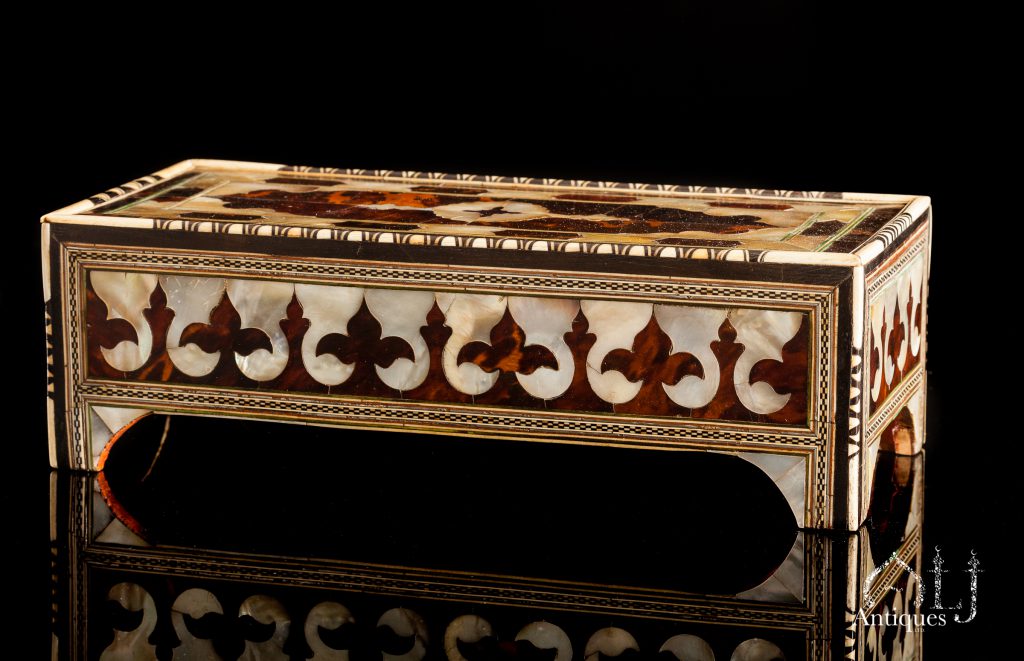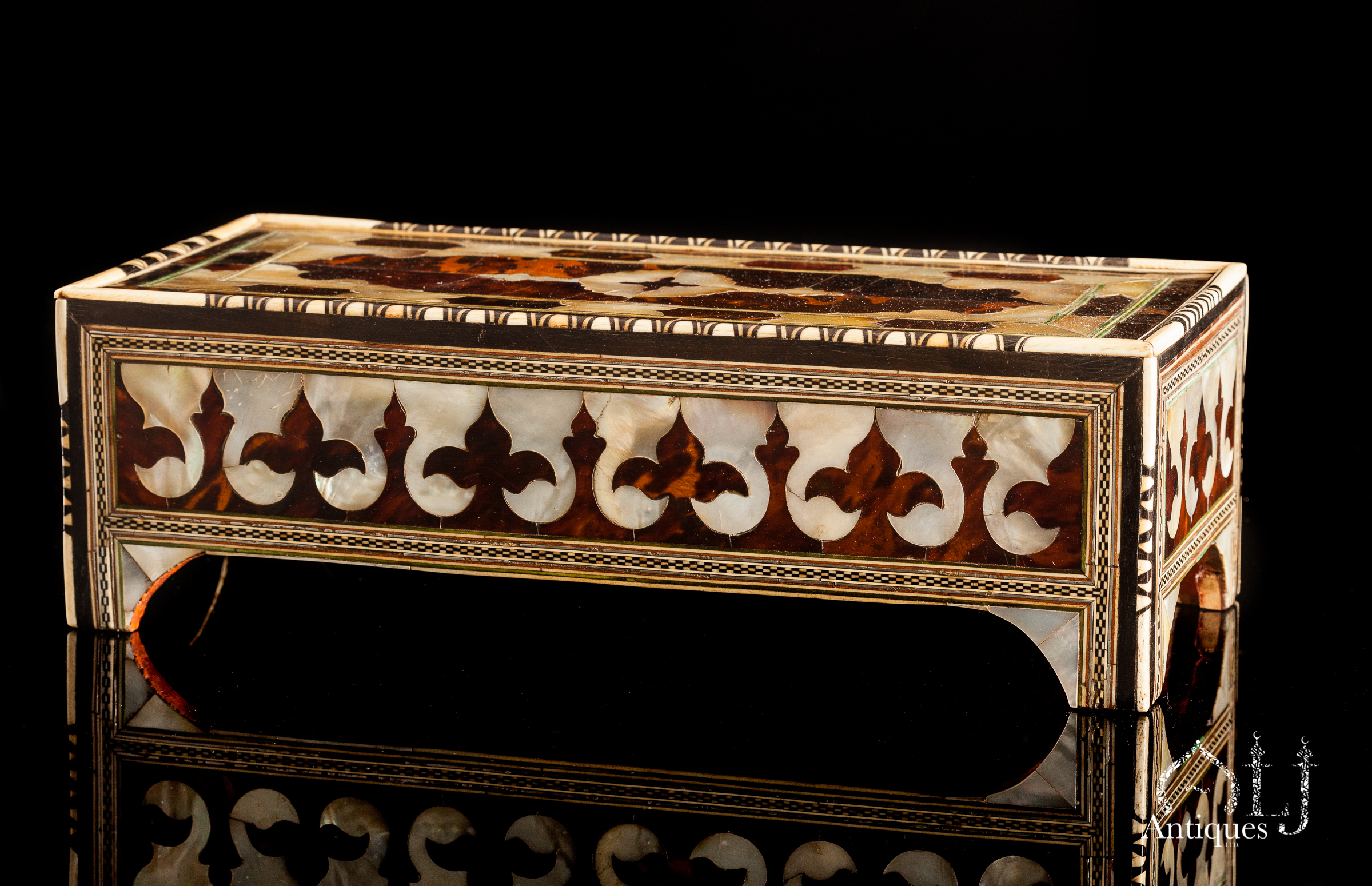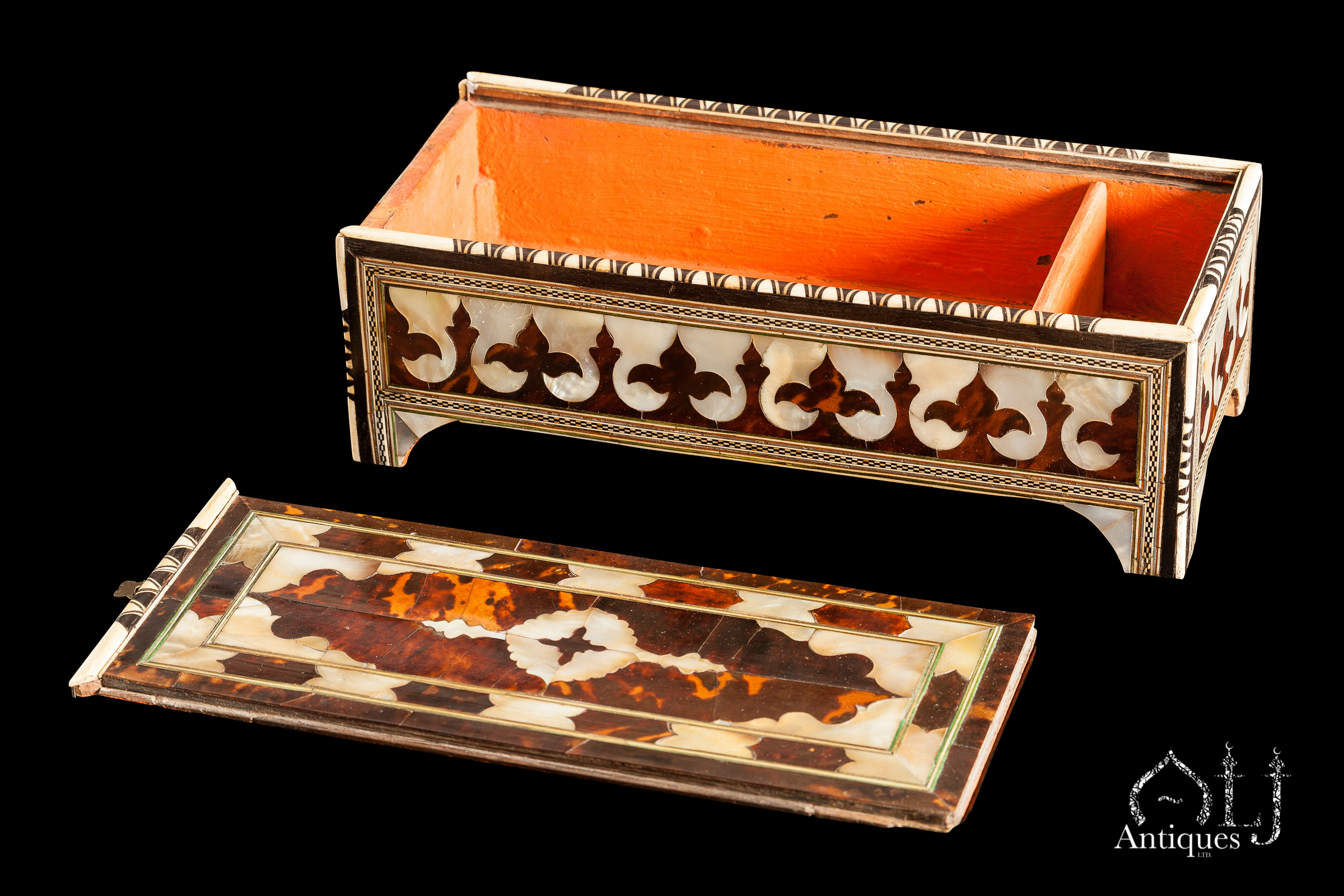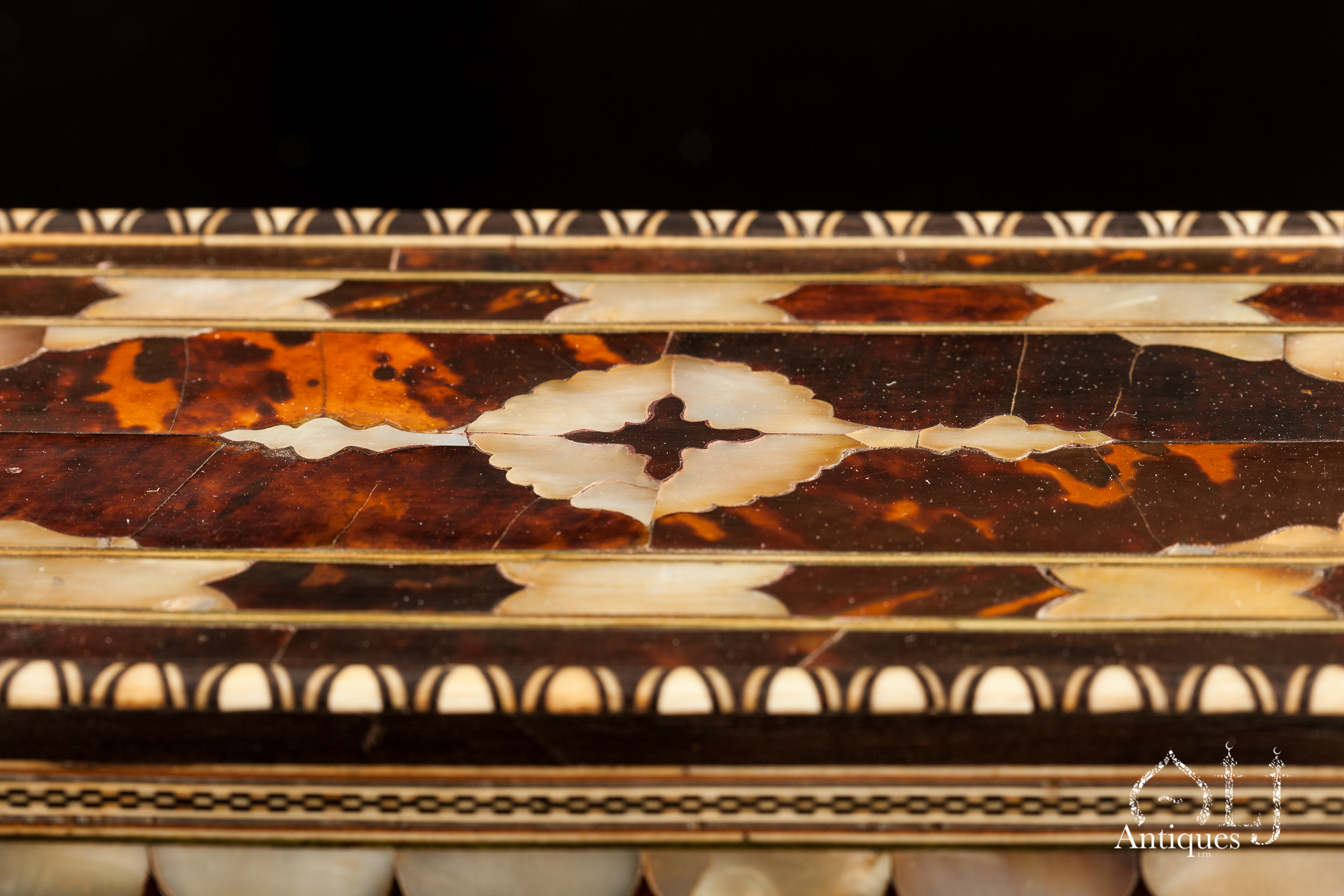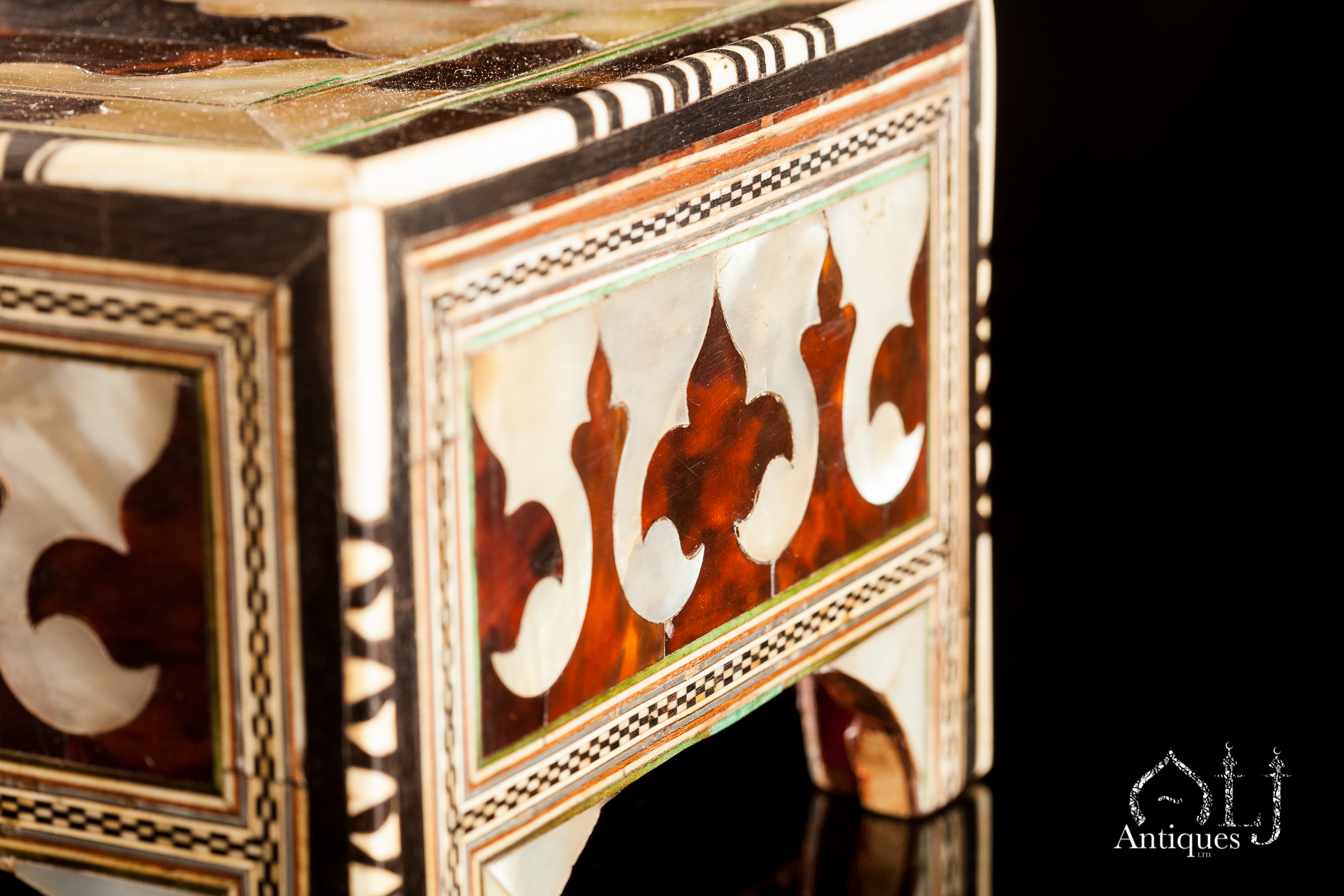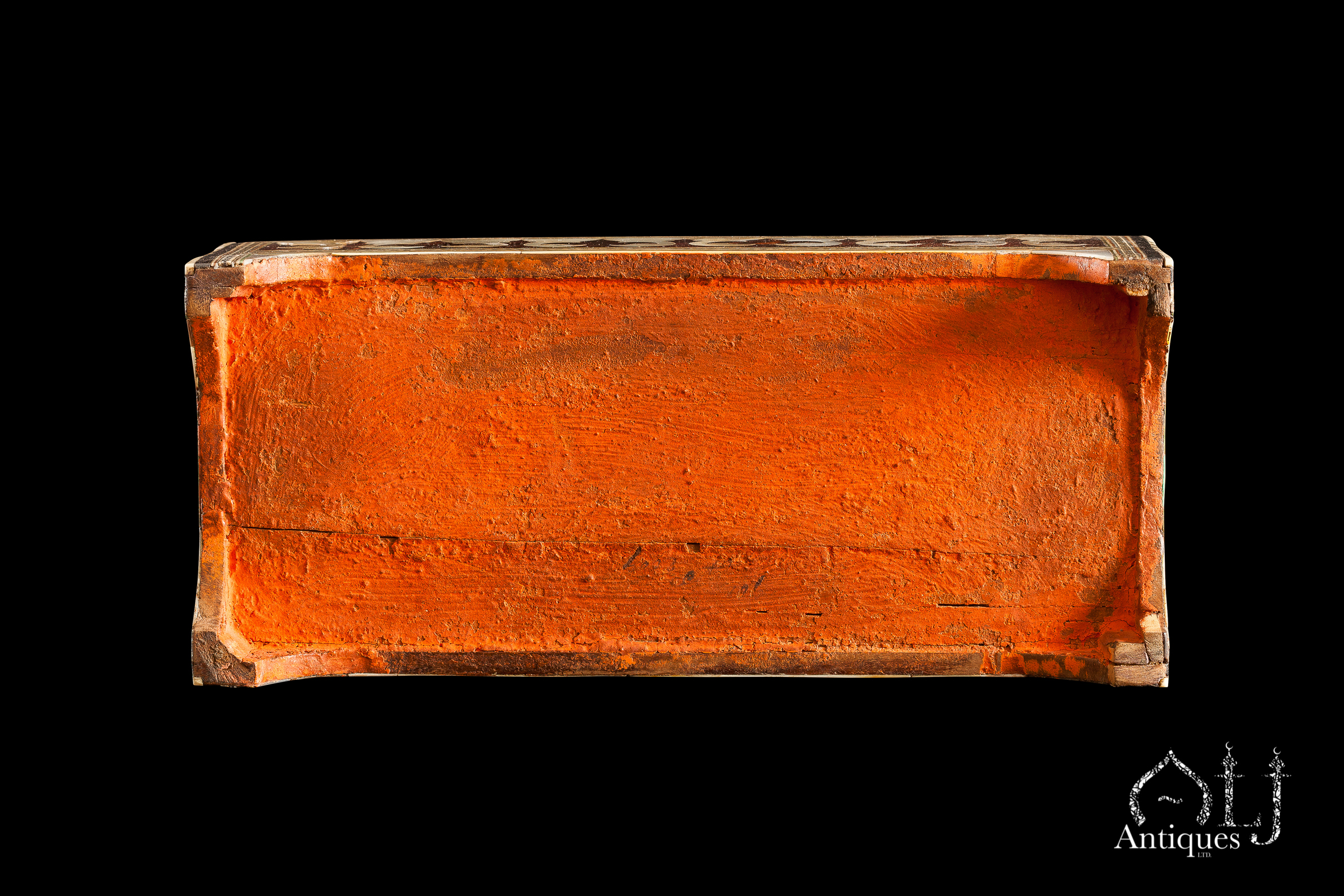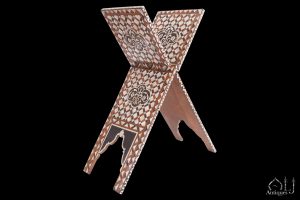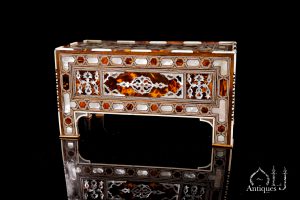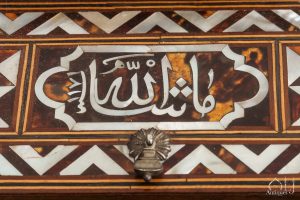Description
Calligraphy was highly valued by the Ottomans, the materials and instruments used in this art were also of great importance, thus, calligrapher boxes and scribe boxes were finely made with intricate and elaborate decorations meticulously carried out by fine artists whose work represented artistic expression as well as religious devotion, their work involved copying the Quran or creating elegant calligraphy that had a great visual appeal that added tremendous value to their work.
In the 17th century the Ottoman taste had shifted towards the usage of other different and more fashionable and decorative elements and materials in the making of the Ottoman furniture, where a new and very predominant Ottoman materials were used such as rosewood, tortoiseshell, mother of pearl, walrus Ivory, and metal inly techniques in the making of the Ottoman furniture, this does not mean that the Ottomans had stopped importing the other basic decorating elements such as ivory, and ebony from Egypt via Sudan.
Our present lot belongs to a similar group of Ottoman scribe’s boxes that were made in the 17th and 18th century in Turkey.
The box is of a rectangular form standing on four short legs, the box’s interior is been divided into two sections, one large section which can be used for various needs such as for maintaining all the writing tools and pens also can be used for keeping scrolls of paper, whereas the other smaller section can be used for keeping the inkwells.
The exterior wooden panels were decorated and veneered with a layer of a combination of a classical Ottoman marquetry work and overlaid materials.
These materials such as tortoiseshell, thin sliced occasionally stained ivory pieces, bone, horn, mother-of-pearl, ebony, white metal and wood were either available locally or imported.
The Ottoman designs used in wood decoration were unique and were a trademark of classical Ottoman furniture work in general.
Sophisticated designs such as medallions, cartouches, calligraphy and beautiful floral designs were characteristic of 16, 17 and 18th Century designs whereas geometric designs were more prominent of the works of the 19th century onwards. Thus, the designs used were preliminarily complex, but became increasingly less complicated with the passage of time with a clear tendency towards geometric designs.
Tortoiseshell was gilded on the backside to achieve a beautiful reflection of light in the transparent parts of the tortoiseshell.
This was a distinguishing feature of early designs.
These designs were used in decorating various Ottoman furniture and wooden surfaces such as doors, boxes, cabinets, etc.
Also Medallion decoration was a distinguishing feature of other Ottoman decorations in important manuscripts, holly Qurans, Iznik, etc.
The centre of the sliding lid at the top is elaborately decorated with typical Persian style overlapping medallions, the smaller central medallion is based on a cross motif and the exterior medallion ends with two parallel arched decoration, this type of medallions were very fashionable for many centuries, the medallions are beautifully and intricately executed in both mother of pearl and tortoiseshell, surrounding these two medallions is a frame decorated with alternating tortoiseshell and mother of pearl geometrical cartouches.
The overall borders are beautifully outlined by an alternating small and thin piece of ivory and ebony beading decoration inside parallel lines of green stained ivory, white metal most likely lead and rosewood lines.
The box interior and the exterior base are painted with red polychrome to enhance the visual appeal of this magnificent lot.
For an almost identical17th. Century Ottoman scribes box please see the scribe’s box under the title Diplomatic Gifts, Travel Souvenirs, the 17th. Century Scribe’s Pen Box & Archival Documents exhibited at the Islamic Art Department at the “Musee Du Louvre”, (The Louvre Museum) in Paris, this lavish pen box bears witness to the spread of Ottoman artefacts in Europe during the 18th. Century, the box contains important documents that dates Back to the 18th. Century which was once part of the collection of Louis Francois, Marquis de Monteynard (1713-1791) AD.
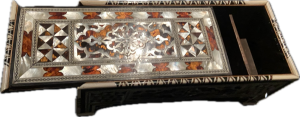
For other related examples please see our references bellow.
(Registration for an item with a percentage of ivory, declaration reference no.UXCZFJEF)

